Home>Articles>How Deep Do You Have To Bury Electrical Conduit
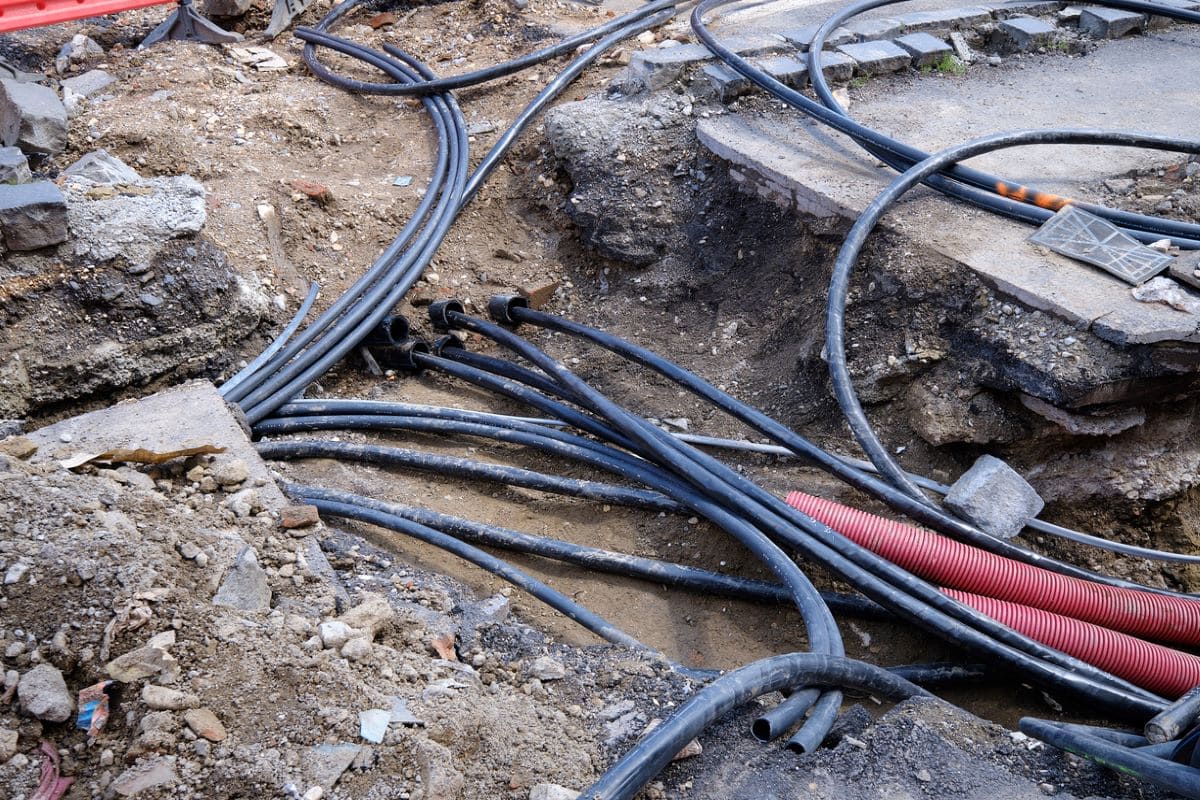

Articles
How Deep Do You Have To Bury Electrical Conduit
Modified: May 6, 2024
Learn the proper depth for burying electrical conduit in this helpful article. Get expert tips and advice for your electrical projects.
(Many of the links in this article redirect to a specific reviewed product. Your purchase of these products through affiliate links helps to generate commission for Storables.com, at no extra cost. Learn more)
Introduction
When it comes to electrical installations, safety is of utmost importance. Properly burying electrical conduit is a crucial step to ensure the safety and functionality of your electrical system. Whether you are conducting a new installation or making repairs to an existing system, understanding the depth requirements for burying electrical conduit is essential.
Electrical conduit serves as a protective enclosure for electrical cables, providing insulation and guarding against damage caused by moisture, physical impact, and environmental factors. By burying the conduit, you protect the electrical wiring from potential hazards and maintain a neat and organized appearance.
In this article, we’ll dive deep into the topic of burying electrical conduit, exploring the importance of this process, the depth requirements according to the National Electrical Code (NEC), suitable types of conduit for burial, common mistakes to avoid, and the necessary tools and materials you’ll need for this task.
So let’s get started and discover the ins and outs of burying electrical conduit to ensure a safe and efficient electrical system for your home or business.
Key Takeaways:
- Properly burying electrical conduit is crucial for protecting wiring from environmental factors, physical damage, and ensuring compliance with building codes, enhancing safety and aesthetics.
- Understanding the depth requirements for burying electrical conduit according to the National Electrical Code (NEC) is essential for a safe and reliable electrical system.
What is Electrical Conduit?
Electrical conduit is a system of piping used to protect and route electrical wires and cables within a building or structure. It provides a secure and organized pathway, ensuring the safety and integrity of the electrical wiring.
Conduit is typically made of metal or plastic, and it comes in various shapes and sizes, including rigid metal conduit (RMC), electrical metallic tubing (EMT), and PVC conduit. These different types of conduit offer varying levels of flexibility, strength, and durability, depending on the specific application.
The primary purpose of electrical conduit is to enclose electrical cables and wires, safeguarding them from moisture, physical damage, and potential fire hazards. It acts as a protective barrier, preventing accidental contact with live wires and reducing the risk of electrical shocks or short circuits.
In addition to protecting the wires, conduit also serves as a conduit for future maintenance and upgrades. By providing a designated pathway for the wires, it becomes easier to access, repair, or replace the electrical components without disrupting the surrounding infrastructure.
Furthermore, electrical conduit helps to comply with building codes and regulations. Most electrical installations require conduit to be used, especially in areas where the wires may be exposed to harsh conditions or subjected to high levels of traffic or impact.
Overall, electrical conduit plays a vital role in providing a safe and efficient electrical system. By enclosing and protecting the wiring, it ensures the longevity and reliability of your electrical infrastructure.
Importance of Burying Electrical Conduit
Burying electrical conduit is a critical step in ensuring the safety, functionality, and longevity of your electrical system. Here are several reasons why burying electrical conduit is important:
- Protection from Environmental Factors: When electrical conduit is buried underground, it is shielded from exposure to various environmental factors such as moisture, extreme temperatures, and UV rays. These factors can deteriorate the integrity of the electrical wiring and potentially lead to electrical malfunctions or hazards. By burying the conduit, you provide an added layer of protection for the electrical cables, reducing the risk of damage and ensuring the longevity of the system.
- Prevention of Physical Damage: Above-ground electrical conduit is vulnerable to physical damage caused by accidental impact, construction work, or vandalism. By burying the conduit, you eliminate these risks and significantly reduce the chance of the wires being disturbed or damaged. This is particularly important in areas with high foot traffic or where heavy machinery is used, as underground conduit is less likely to be accidentally bumped or dislodged.
- Enhanced Aesthetics: Burying electrical conduit provides a cleaner and more professional appearance for your property. Rather than having exposed wiring running along walls or across surfaces, burying the conduit allows for a neater and more visually appealing electrical system. This is particularly beneficial for commercial buildings, where aesthetics are crucial for creating a positive impression on clients and visitors.
- Compliance with Building Codes: Most building codes and regulations require electrical conduit to be buried at specific depths, especially in areas with high foot traffic or where construction is taking place. By adhering to these requirements, you ensure that your electrical system meets the necessary safety standards and reduce the risk of legal implications or penalties.
- Easier Access for Maintenance: Burying electrical conduit provides easier access for maintenance or future upgrades. In the event of repairs or replacements, the buried conduit can be easily accessed and worked on, without the need to dismantle walls or disrupt the surrounding infrastructure. This saves time, money, and minimizes any inconvenience.
Overall, burying electrical conduit is crucial to protect your electrical system from environmental factors, physical damage, and to comply with building codes. It not only ensures the safety and functionality of your electrical system but also enhances the aesthetics and accessibility for maintenance purposes.
Factors to Consider Before Burying Electrical Conduit
Before burying electrical conduit, it’s important to take several factors into consideration to ensure a successful and safe installation. Here are some key factors to keep in mind:
- Type of Conduit: Determine the type of conduit suitable for your specific application. Consider factors such as the type of wiring, the environment it will be installed in (indoor or outdoor), and any specific regulations or codes that may dictate the use of certain conduit types.
- Depth Requirements: Understand the depth requirements for burying electrical conduit. The National Electrical Code (NEC) provides guidelines on the minimum burial depths based on the conduit type and the surrounding environment. Adhering to these depth requirements is crucial for maintaining the integrity and safety of the electrical system.
- Permits and Regulations: Check if you require any permits or need to comply with specific regulations before burying electrical conduit. Local building codes and regulations may have specific requirements that need to be met to ensure a legal and safe installation.
- Location: Consider the location where the conduit will be buried. Assess factors such as soil conditions, moisture levels, proximity to water sources (like streams or lakes), and potential hazards that may impact the buried conduit. This will help determine the appropriate conduit material and burial depth.
- Future Expansion: Anticipate future expansion needs of your electrical system. Consider the possibility of adding additional circuits or wires in the future and plan accordingly when deciding on conduit size and capacity.
- Proximity to Other Utilities: Determine the location of other underground utilities, such as gas lines, water pipes, or telecommunications cables. You want to ensure that the electrical conduit is buried at a safe distance from these utilities to avoid any potential interference or damage during installation.
- Terrain and Accessibility: Evaluate the terrain and accessibility of the burial site. Factors such as rocky or uneven ground, slopes, or obstructions will affect the ease and feasibility of burying the conduit. Ensure that the site is easily accessible for installation and future maintenance purposes.
- Professional Assistance: Depending on the complexity of the project and your level of expertise, it may be beneficial to seek professional assistance. Consulting with an electrician or contractor experienced in electrical installations can help ensure that all factors are considered, and the conduit is safely and correctly buried.
By carefully evaluating these factors before burying electrical conduit, you can ensure a successful and compliant installation that meets your specific needs and ensures the safety and functionality of your electrical system.
Depth Requirements for Burying Electrical Conduit
Proper burial depth is crucial when installing electrical conduit to ensure the safety and integrity of the electrical system. The depth requirements for burying electrical conduit are determined by the National Electrical Code (NEC) and may vary depending on several factors, including the type of conduit, the environment, and local regulations.
Here are the general guidelines for burial depth requirements based on commonly used conduit types:
- Rigid Metal Conduit (RMC): RMC, also known as rigid steel conduit (RSC), is a heavy-duty type of conduit typically used in commercial and industrial applications. The NEC requires a minimum burial depth of 6 inches for RMC. However, in areas where subject to vehicular traffic, the burial depth should be increased to 18 inches.
- Electrical Metallic Tubing (EMT): EMT is a thin-walled and lightweight conduit commonly used in residential and commercial applications. The NEC specifies a minimum burial depth of 6 inches for EMT in all areas, regardless of vehicular traffic conditions.
- PVC Conduit: PVC conduit is a popular choice for both underground and above-ground installations due to its durability and affordability. The burial depth requirement for PVC conduit varies depending on the environment. In areas without vehicular traffic, the minimum burial depth is 18 inches. However, in areas subject to vehicular traffic, the minimum burial depth increases to 24 inches.
It’s important to note that local regulations may have additional requirements or may differ from NEC guidelines. Therefore, it is essential to consult with local authorities or electrical professionals to ensure compliance with all relevant regulations.
When determining the appropriate burial depth, other factors such as the soil conditions, local frost line, and the potential for damage or interference should also be considered. For instance, in areas with a deeper frost line, it may be necessary to bury the conduit deeper to prevent damage from freezing and thawing cycles.
It is worth mentioning that the burial depth refers to the top of the conduit, and not the top of the cables within the conduit. The cables inside the conduit should be positioned at least 12 inches below the ground surface, or deeper depending on local regulations or specific project requirements.
Adhering to the proper burial depth requirements will help protect the electrical conduit from physical damage, minimize exposure to potential hazards, and ensure compliance with safety standards. Following these guidelines is essential for a safe and reliable electrical system.
National Electrical Code (NEC) Guidelines
The National Electrical Code (NEC) is a set of guidelines and standards developed by the National Fire Protection Association (NFPA) for electrical installations in the United States. These guidelines provide comprehensive rules and regulations to ensure the safe and efficient installation of electrical systems, including the burying of electrical conduit.
When it comes to burying electrical conduit, there are several key NEC guidelines to keep in mind:
- Burial Depth: The NEC specifies the minimum burial depths for different types of conduit based on factors such as the type of conduit, the environment, and the presence of vehicular traffic. These burial depth requirements help protect the conduit from damage and ensure the safety of the electrical system.
- Grounding: The NEC requires that buried metallic conduit be properly grounded to provide a safe path for electrical current in the event of a fault. This helps prevent the buildup of electrical charges and reduces the risk of electrical shock or fire. Non-metallic conduit, such as PVC, does not require grounding.
- Protection from Damage: The NEC mandates that buried conduit be protected from damage by providing adequate cover. This includes protection from physical damage, such as being crushed by construction equipment or damaged by landscaping activities. The depth of burial and the use of protective measures such as warning tape, marker posts, or concrete encasement are all considerations in meeting this requirement.
- Expansion and Contraction: The NEC also addresses expansion and contraction of conduit due to temperature changes. Thermal expansion and contraction can impact the integrity of the conduit, so the NEC provides guidelines on how to accommodate for these movements, such as the use of expansion joints or bends in the conduit.
- Junction Boxes: The NEC requires the use of junction boxes at any location where splices or connections are made in buried conduit. Junction boxes offer protection and accessibility for future maintenance and repairs, ensuring that connections are properly enclosed and secured.
It is important to note that the NEC provides minimum requirements, and local jurisdictions may have additional or more stringent regulations. Always consult with local authorities and electrical professionals to ensure compliance with all applicable codes and regulations.
Adhering to the NEC guidelines for burying electrical conduit is critical in achieving a safe and code-compliant electrical installation. By following these guidelines, you can ensure the protection, functionality, and longevity of your electrical system.
When burying electrical conduit, it should be buried at least 18 inches deep for straight runs and 24 inches deep for areas where the conduit will be driven over, such as a driveway. Always check local building codes for specific requirements.
Types of Conduit Suitable for Burial
When it comes to burying electrical conduit, there are several types of conduit that are suitable for underground installations. The choice of conduit depends on factors such as the specific application, environmental conditions, and local regulations. Here are some common types of conduit that are suitable for burial:
- Rigid Metal Conduit (RMC): Rigid metal conduit, also known as RMC or rigid steel conduit, is a robust and heavy-duty option for burying electrical wiring. Made of galvanized steel, RMC provides superior protection against physical damage, moisture, and corrosive elements. It is commonly used in commercial and industrial settings where durability and high-level protection are required.
- Electrical Metallic Tubing (EMT): Electrical metallic tubing, or EMT, is a lightweight and cost-effective conduit option suitable for both residential and commercial applications. EMT is made of thin-walled steel or aluminum, providing excellent protection against physical impact and moisture. It is commonly used in non-hazardous locations where the level of protection required is moderate.
- PVC Conduit: PVC conduit, or polyvinyl chloride conduit, is a popular choice for burying electrical wiring due to its durability, affordability, and ease of installation. PVC conduit is resistant to moisture, chemicals, and corrosion, making it ideal for both underground and above-ground applications. It is available in various sizes and can be easily cut and joined using PVC solvent cement.
- High-Density Polyethylene (HDPE) Conduit: HDPE conduit is a flexible and durable option for burying electrical wiring. It is made of high-density polyethylene, which provides excellent resistance to chemicals, moisture, and corrosive elements. HDPE conduit is commonly used in areas where flexibility is required, such as around curves or in areas with shifting soil conditions.
- Flexible Metal Conduit (FMC): Flexible metal conduit, or FMC, is a flexible option for burying electrical wiring. It is made of interlocked metal strips with a plastic or metal cover, offering protection against physical impact and moisture. FMC is commonly used in areas where flexibility is necessary, such as in tight spaces or areas with bends and curves.
It is important to consult with local building codes and regulations to determine the specific requirements for burying conduit in your area. Local regulations may dictate the type of conduit that is permitted for burial or require additional measures, such as grounding or protective coatings.
Overall, the choice of conduit for burying electrical wiring depends on the specific needs and requirements of the project. Consider factors such as durability, level of protection, flexibility, and ease of installation when selecting the appropriate conduit for burial.
Common Mistakes to Avoid When Burying Electrical Conduit
When burying electrical conduit, it is crucial to avoid common mistakes that can compromise the safety and functionality of the electrical system. By being aware of these mistakes, you can ensure a successful burial process. Here are some of the most common mistakes to avoid:
- Inadequate Burial Depth: Failing to meet the minimum burial depth requirements specified by the National Electrical Code (NEC) can lead to damage to the conduit and electrical wiring. Ensure you understand the depth requirements for the specific conduit type and the environment it will be installed in to prevent accidental damage and ensure compliance with safety regulations.
- Poorly Protected Conduit: Neglecting to protect the buried conduit adequately can lead to damage caused by construction activities or future landscaping projects. It is essential to use appropriate protection measures, such as warning tape, marker posts, or concrete encasement, to prevent accidental damage and ensure the longevity of the buried conduit.
- Insufficient Spacing: Improper spacing between conduits can cause overcrowding and make it difficult to add or remove wires in the future. It is important to plan and allocate sufficient space between conduit runs to allow for easy access, maintenance, and future expansion needs.
- Lack of Proper Grounding: Grounding is a critical aspect of electrical systems. Failing to properly ground the buried conduit can lead to electrical hazards and compromised safety. Ensure that metallic conduit is grounded according to the NEC guidelines to provide a safe path for electrical current in the event of a fault.
- Incorrect Bend Radius: Bending the conduit at an incorrect radius can cause damage to the conduit or create resistance for the wires within. Follow the manufacturer’s bend radius recommendations for the specific conduit type to maintain the integrity of the conduit and facilitate smooth wire pulling.
- Inadequate Protection from Water: Failure to provide proper protection against water infiltration can result in damage to the electrical wiring and potential electrical hazards. Seal conduit joints with appropriate fittings, use waterproof gaskets, and ensure the burial site is well-drained to prevent water infiltration.
- Lack of Future Expansion Considerations: Failing to plan for future expansion needs can result in difficulties and additional costs when adding or modifying electrical wiring in the buried conduit. Leave enough space and consider installing additional empty conduit runs to accommodate future expansion and changes in the electrical system.
- Failure to Obtain Permits: Neglecting to obtain the necessary permits for burial and electrical installations can lead to legal complications and safety risks. Research and comply with local building codes and regulations, and obtain the required permits to ensure a compliant and safe installation.
By avoiding these common mistakes, you can ensure a successful burial of electrical conduit, reducing the risk of future problems and ensuring the safety and functionality of your electrical system. If you are unsure or lack experience, consult with a professional electrician to ensure a proper and code-compliant installation.
Tools and Materials Needed for Burying Electrical Conduit
Before you embark on burying electrical conduit, it’s essential to gather the necessary tools and materials to ensure a smooth installation process. Here are the tools and materials you will need:
- Conduit: Select the appropriate type and size of conduit for your project, considering factors such as the environment, wiring requirements, and local regulations. Common conduit materials include Rigid Metal Conduit (RMC), Electrical Metallic Tubing (EMT), PVC conduit, or High-Density Polyethylene (HDPE) conduit.
- Conduit Connectors: Depending on your conduit type, you will need connectors to join lengths of conduit together. These can include couplings, compression connectors, or push-fit connectors designed for your specific conduit material.
- Trenching Tools: Digging trenches is a crucial part of burying conduit. You will need tools such as a shovel or a trenching machine to excavate the ground to the required depth. Consider using a trenching machine if you have a lengthy trench to dig, as it can significantly speed up the process.
- Tape Measure: Accurate measurements are essential for ensuring the proper burial depth and spacing between conduit runs. Use a tape measure to measure distances and ensure compliance with the National Electrical Code (NEC) guidelines and local regulations.
- Pipe Cutter or Saw: Depending on the conduit material, you may need a pipe cutter or saw to cut the conduit to the desired lengths. Ensure that the cuts are clean and straight to ensure a proper fit with connectors.
- Fish Tape: A fish tape is used to guide and pull electrical wires through the conduit. It is a flexible, narrow tape that can be threaded through the conduit and then used to guide the wires through the length of the conduit run.
- Wire Pulling Lubricant: Applying a wire pulling lubricant to the wires before pulling them through the conduit helps to reduce friction and facilitates smoother wire pulling. Choose a lubricant specifically designed for electrical applications to ensure compatibility with the wiring insulation.
- Hammer and Chisel: In some cases, you may need a hammer and chisel to create openings in walls or concrete surfaces for conduit entry or exit points. Use these tools carefully, ensuring safety and precision in creating the necessary openings.
- Protective Equipment: Always prioritize safety when working with electrical installations. Wear appropriate personal protective equipment (PPE) such as gloves, safety glasses, and sturdy footwear. This will help protect against potential hazards and ensure your safety during the installation process.
Remember to consult local codes and regulations to ensure compliance with any additional requirements or specific tools and materials needed in your area. Additionally, it’s a good practice to have a reliable reference guide and documentation, such as the National Electrical Code (NEC) handbook, to ensure accurate information throughout the installation process.
By having the right tools and materials readily available, you can streamline the process of burying electrical conduit and ensure a successful and code-compliant installation.
Read more: How To Bury Electrical Wire To Shed
Step-by-Step Process of Burying Electrical Conduit
Burying electrical conduit is a systematic process that requires careful planning and execution. By following these step-by-step instructions, you can ensure a successful installation:
- Plan the Installation: Start by planning the route of the conduit, considering factors such as the location of the electrical source, the destination of the wiring, and any potential obstacles or hazards along the way. Determine the type and size of conduit required for the project and obtain all necessary permits and approvals from local authorities.
- Mark the Trench: Use a tape measure and marking flags to mark the trench’s desired path. Ensure that you mark the trench’s edges to indicate the exact location where the conduit will be buried. Consider the required burial depth according to the National Electrical Code (NEC) and local regulations.
- Excavate the Trench: Use a shovel or trenching machine to dig the trench to the appropriate depth and width. Be careful not to damage any existing utilities or underground structures. As you excavate, keep the soil nearby for backfilling later.
- Lay the Conduit: Place the conduit into the trench, ensuring it follows the marked path. Connect the conduit sections using the appropriate connectors for your conduit type. Use a level to check that the conduit is straight and properly aligned throughout the trench.
- Secure the Conduit: Use straps, clamps, or other suitable methods to secure the conduit at regular intervals, ensuring stability and preventing movement. This will help maintain the alignment and protect the conduit from potential damage.
- Ground the Conduit: If you are using a metallic conduit, ensure it is properly grounded according to NEC guidelines. Connect grounding wires to the conduit at designated intervals using grounding screws or connectors, and then bond these wires to the grounding system of the building or electrical source.
- Backfill the Trench: Fill the trench with the soil that was initially excavated, making sure to compact it gently but firmly around the conduit. This provides stability and support for the buried conduit. Avoid using large rocks or hard objects that could potentially damage the conduit.
- Test the Installation: After the trench is backfilled, conduct a thorough inspection of the conduit and connections for any visible defects or issues. Test the electrical system to ensure proper functionality before covering the trench with additional landscaping or finishing materials.
- Finalize the Area: Once the installation is complete and the electrical system has been tested and verified, restore the area around the buried conduit. This may involve reseeding grass, adding landscaping features, or applying concrete or pavement to cover the trench and create a finished appearance.
Throughout the installation process, ensure you adhere to the requirements of the National Electrical Code (NEC) and any relevant local regulations. If you are unsure or lack experience, consider consulting with a professional electrician or contractor for guidance and assistance.
By following these step-by-step instructions, you can successfully bury electrical conduit, ensuring a safe, reliable, and code-compliant electrical installation.
Conclusion
Burying electrical conduit is a crucial step in ensuring the safety, functionality, and aesthetics of your electrical system. By following the guidelines and best practices outlined in this article, you can successfully bury electrical conduit while avoiding common mistakes and ensuring compliance with the National Electrical Code (NEC) and local regulations.
Throughout the process, it is important to select the appropriate type of conduit for your specific needs, considering factors such as durability, protection against environmental factors, and future expansion possibilities. Adhering to the proper burial depth requirements is vital to ensure the protection and integrity of the conduit and the electrical wiring it contains. Additionally, properly grounding the metallic conduit and providing adequate protection against physical damage and water infiltration are essential for a safe and reliable electrical installation.
Remember to consult with local authorities, such as building code officials or electrical professionals, to ensure compliance with any additional requirements or regulations specific to your area.
By careful planning, proper execution, and attention to detail, burying electrical conduit can be accomplished with ease and efficiency. This process not only enhances the safety of your electrical system but also provides a clean and organized appearance. It allows for future access, maintenance, and expansion needs, ensuring the long-term functionality and usability of your electrical infrastructure.
If you are unsure or lack experience, it is always recommended to seek the assistance of a professional electrician or contractor who can provide expert guidance and ensure a compliant installation.
By following the comprehensive information provided in this article, you can confidently undertake the task of burying electrical conduit, resulting in a secure, efficient, and visually appealing electrical system for your home or business.
After mastering how to properly bury electrical conduit, you might wonder about the best types of wires for underground settings. Our next guide walks you through choosing and installing underground wiring, ensuring your outdoor electrical systems are safe and efficient. Don't miss out on these crucial tips that can save time and prevent costly mistakes in future projects.
Frequently Asked Questions about How Deep Do You Have To Bury Electrical Conduit
Was this page helpful?
At Storables.com, we guarantee accurate and reliable information. Our content, validated by Expert Board Contributors, is crafted following stringent Editorial Policies. We're committed to providing you with well-researched, expert-backed insights for all your informational needs.


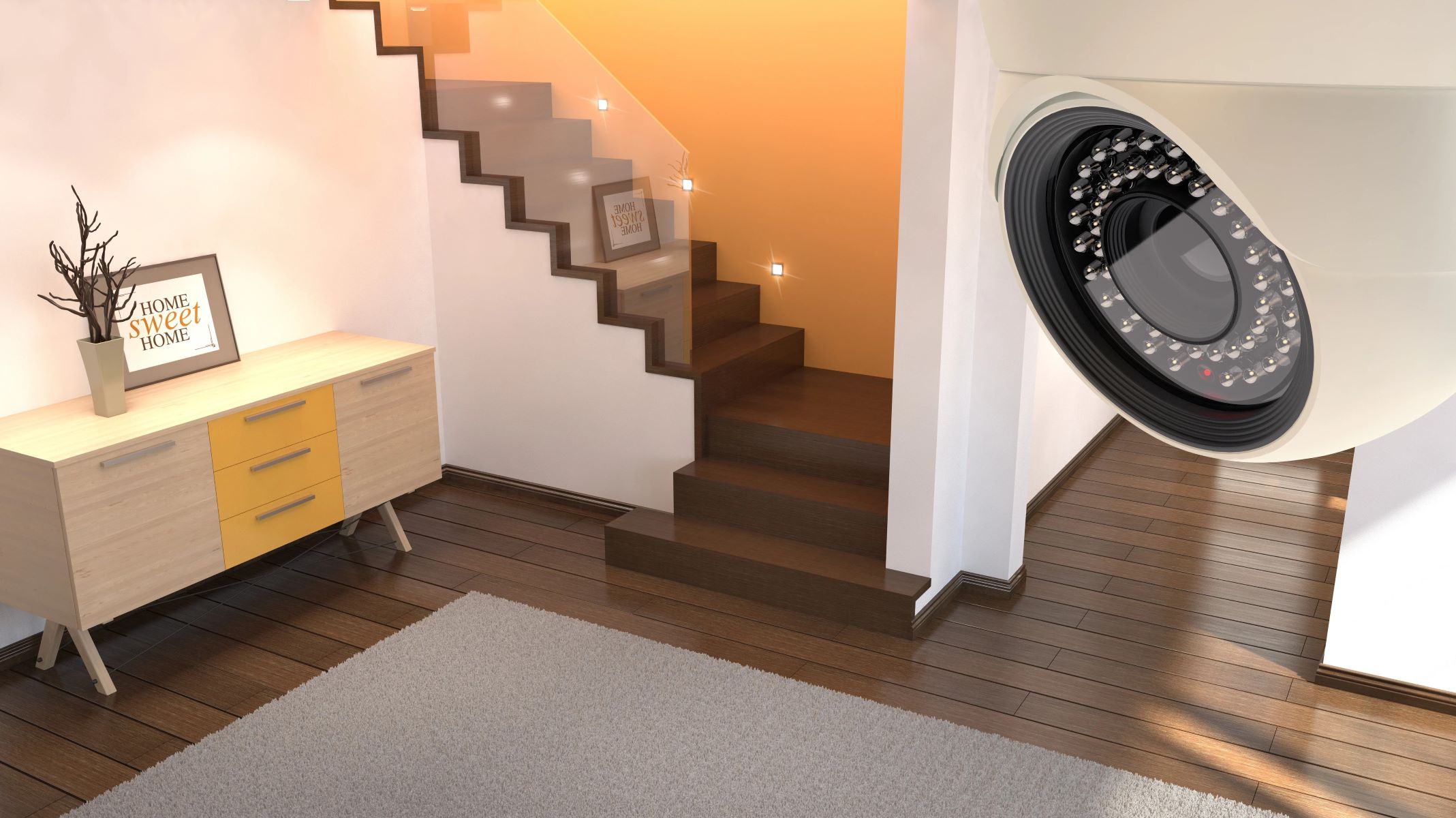


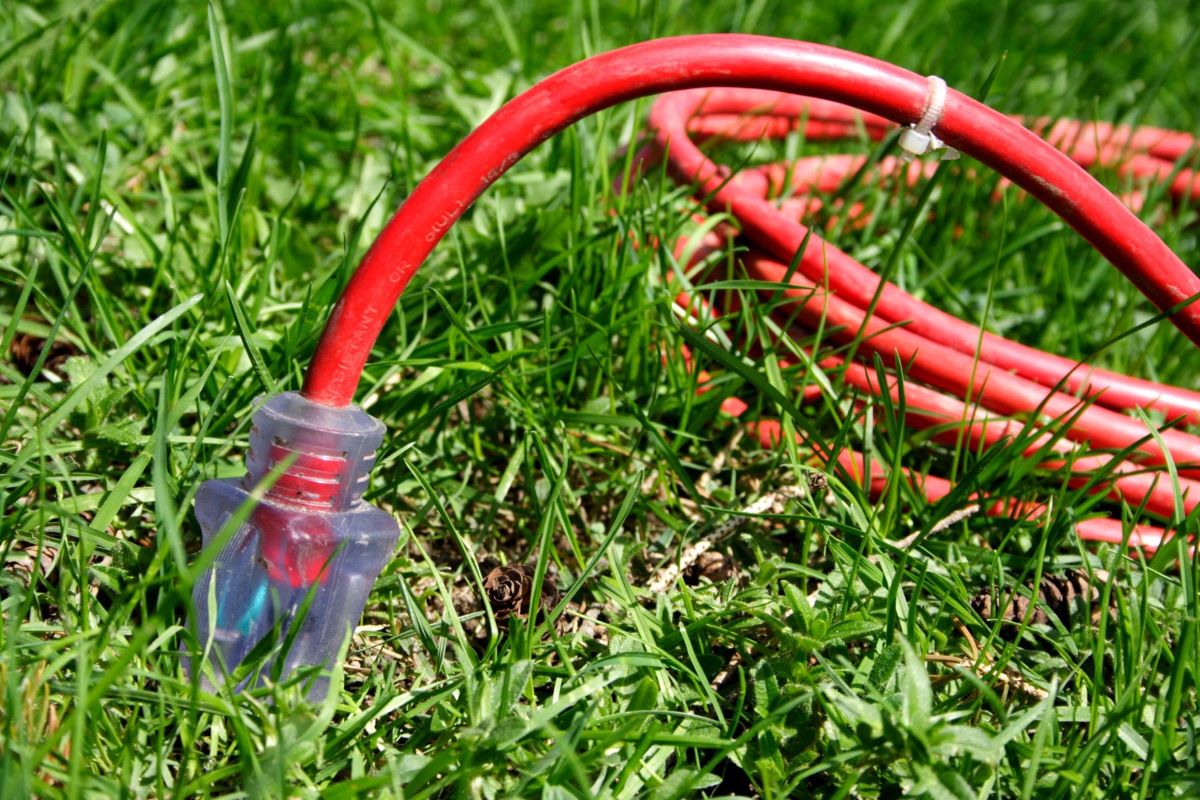

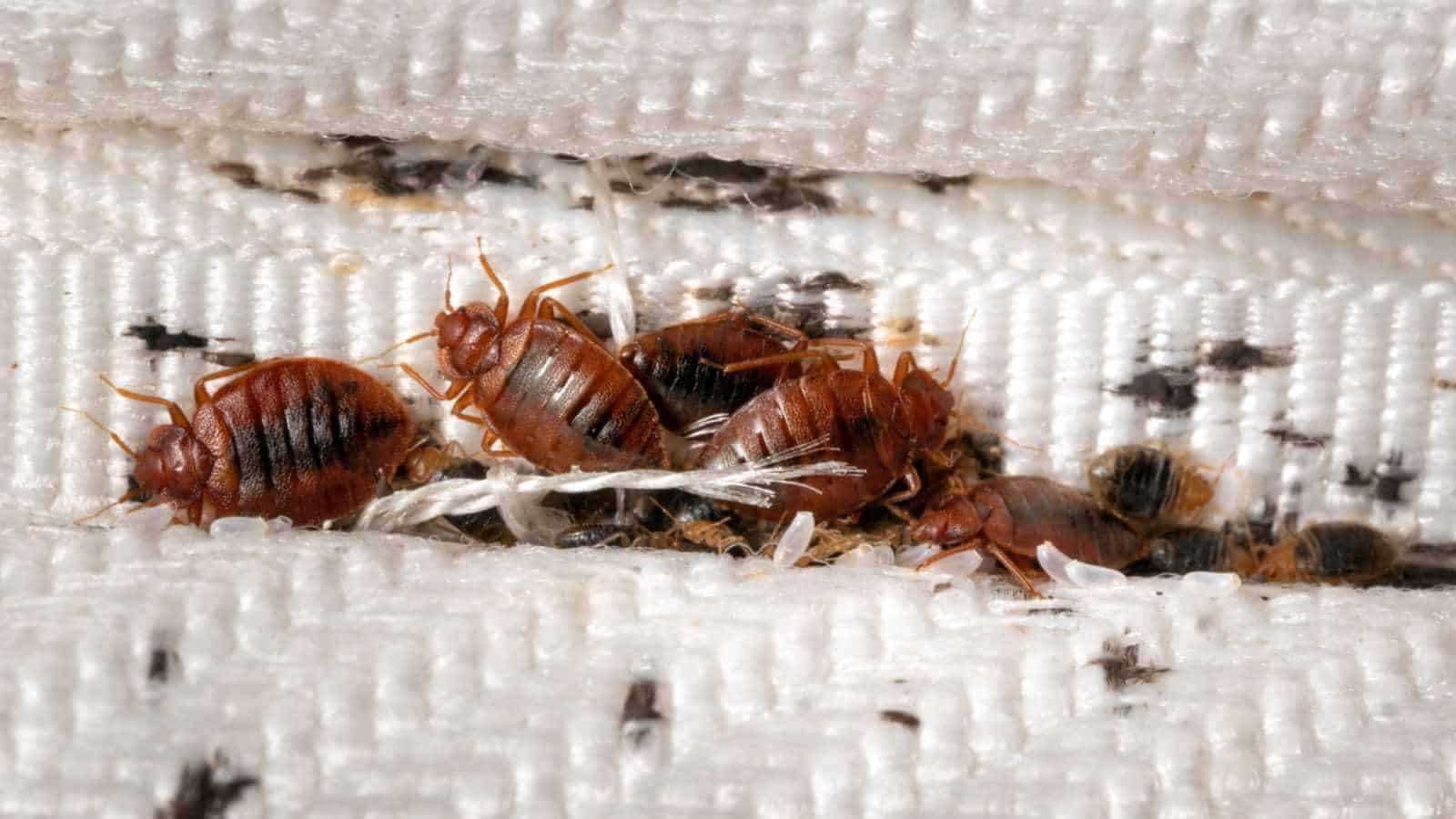




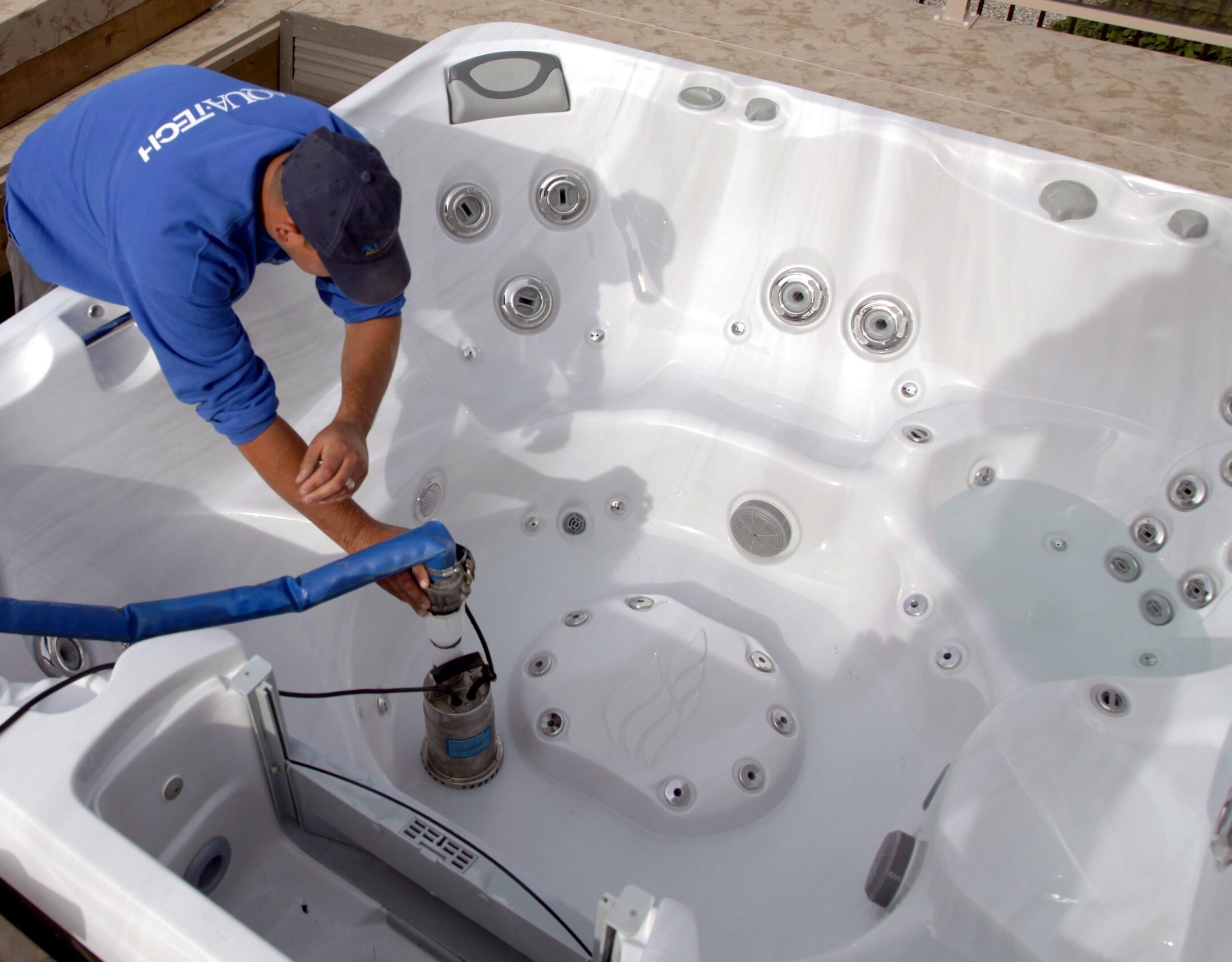

0 thoughts on “How Deep Do You Have To Bury Electrical Conduit”